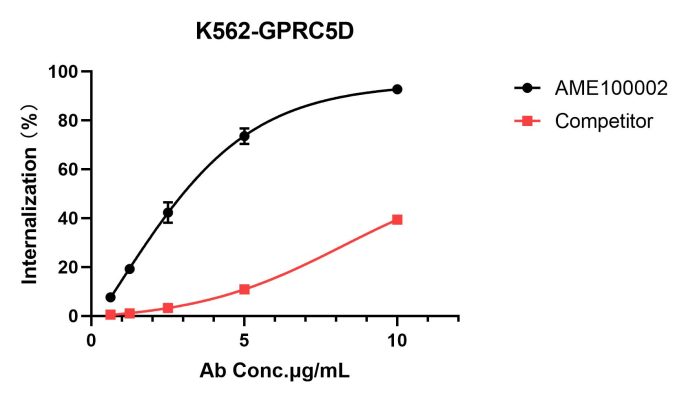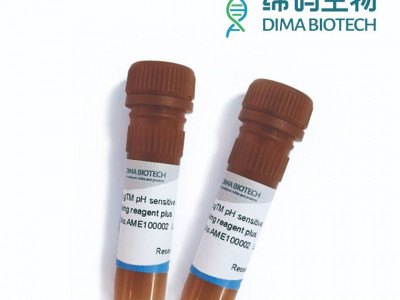| 应用 | Antibody internalization labeling kit |
| 检测方法 | Flow cytometry, detected with FITC or AF488 filter |
| 激发波长 | 505/525 nm |
| 分子量 | The product has a MW of 21.8 kDa |
| 形态与重悬 | Lyophilized from sterile PBS, pH 7.4. Normally 5 % – 8% trehalose is added as protectants before lyophilization. Please see Certificate of Analysis for specific instructions of reconstitution. |
| IgG亚型 | The DiTagTM pH sensitive IgG labeling reagents can be used for human IgG1, IgG2, IgG3, IgG4, rabbit IgG, mouse IgG1, IgG2a, IgG2b and IgG3. |
| 推荐稀释比 | We recommend test antibody to mix with AME100002 at 1:2 in molar ratio |
| 描述 | DiTagTM pH sensitive IgG labeling reagent plus |
| 保存与运输 | The reagents are supplied in lyophilized form. We recommend storing the vial(s) at -20℃, desiccated and protected from light. Once reconstituted, the reagents can be stored at 2-8℃ for 1~2 weeks, or with 50% glycerol at -20℃. |
| 背景 | DiTagTM pH sensitive IgG labeling reagents provide an easy solution to measure internalization activities of antibodies. This reagent utilizes a pH-sensitive fluorescently labeled Fc binding protein that binds to IgG antibodies from various species, resulting in the formation of a fluorescently labeled antibody-reagent complex. After antibody internalization, the surrounding pH becomes acidic and significantly enhances fluorescence signal of antibody-reagent complex. The fluorescence intensity can be used as an indicator to determine the internalization activity of antibodies. By measuring the strength of the fluorescence signal, researchers can assess the efficiency of antibody internalization into cells. This information is crucial in understanding the cellular uptake mechanism of antibodies and assessing their efficacy in targeted therapies or diagnostic applications. Additionally, monitoring the fluorescence intensity can also provide insights into the kinetics of antibody internalization, helping researchers optimize experimental condition and improve the design of antibody-based drug delivery systems. |
| 用途 | Research use only |
验证图

Figure1. The fluorescent signal from GPRC5D ADC BMK-AME100002 conjugate is only detected in GPRC5D positive cells (K562-GPRC5D stable expression cell line), indicating specific internalization.

Figure 2. Comparison of internalization effects between AME100002 and competitor reagent (pH sensitive Z product from T company) on GPRC5D positive cells (K562-GPRC5D stable expression cell line).



